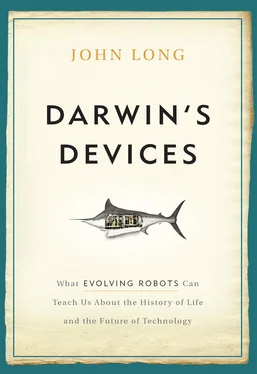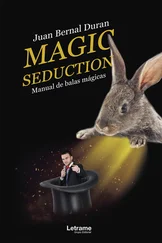When the average and/or variance of the length and thickness of the bill changes from one generation to the next, it is the first clue that natural selection and other evolutionary forces are at work in this particular population at this particular time and place. These visible physical and behavioral features of the birds are what biologists call “phenotypes.” Any phenotype may or may not have a genetic basis. If bill length has, at least in part, a genetic basis, then the change in the average bill length over generational time is evolution. The change in the average and variance of a phenotype within a population is one way to measure evolutionary change.
You can see, though, that we can run into trouble if we forget about our the conditions for evolution by natural selection. What if the phenotype doesn’t have a genetic basis? What if individuals learn some new trick that isn’t genetic? We can measure changes in the presence of the trick from generation to generation, so we think we are measuring evolutionary change, but upon closer inspection we find that the transmission of the behavior occurs by parents teaching their young how to do it. Orcas, for example, teach members of their pod how to specialize in hunting. Members of some pods eat otters. Members of other pods eat seals. Because we can observe the old teaching the young, we know that the tricks of the trade are learned rather than inherited genetically.
One way out of this problem is to focus, as many evolutionary biologists do, on the genotype. If the genes present in a population change, then we know that evolution has happened. We would do this by focusing on alleles. An allele is any particular version of a gene. If you have a gene that produces a protein, two different alleles of the gene may cause the protein to have a different shape or other properties. Every allele can be described as occurring in the population as a proportion, p , of all varieties of a specific gene. The change in p , where we indicate change using the Greek letter capital delta, Δ, is Δ p (read out loud as “delta-p” or “change in allele frequency”). This gives a quick shorthand for measuring evolution: Δ p  0. If the proportion of an allele changes in a population over generational time, then we have evolution in action. Game on!
0. If the proportion of an allele changes in a population over generational time, then we have evolution in action. Game on!
To be fair, here, we ought to use the same sexy mathematical notation for phenotypic change. The population’s average (what statisticians call “mean”) value of a trait is represented mathematically by  (read out loud as “X bar” or “mean of the trait”). As long as this trait, like the length of a finch’s bill, has some genes that determine it, then we have another shorthand for measuring evolution: Δ
(read out loud as “X bar” or “mean of the trait”). As long as this trait, like the length of a finch’s bill, has some genes that determine it, then we have another shorthand for measuring evolution: Δ 
 0. If the mean of a phenotypic trait changes in a population over generational time, then we may also have evolution in action.
0. If the mean of a phenotypic trait changes in a population over generational time, then we may also have evolution in action.
To prepare you for the robotic world you’ll encounter in the upcoming chapters, I should mention at this point that one of the great things about creating your own evolutionary world is that you get to do things like predetermine how genes relate to phenotype. Rather than having to worry about how heritable a phenotype trait was, we just decided that genetics would control entirely every trait, X , and every variation of X . Thus, any phenotypic changes that we might see in a population would have a direct and proportional genetic underpinning: Δ  = Δ p .
= Δ p .
Isn’t that tidy? To be careful about what we have wrought, we would say that in our population of robots any phenotypic change equals a proportional genetic change. Tidy, indeed.
There is a problem with all of this, a perceptual one: usually the Δ  from generation to generation is so small that we, as observers, don’t recognize the changes. The goldfinches in my garden this year look just like the goldfinches in my garden last year. We are blind to slow and steady changes, even those that happen over the course of a few minutes right in front of us. This phenomenon has been called “change blindness,” and the fact that it happens predictably is a startling testament to the fact that we have to be told to pay attention to most things in order to notice when they change. Misdirect attention and you have a magic trick. Thus, it’s no wonder that we don’t automatically track the evolutionary changes happening around us all the time. For example, unless you’re a gardener, you are unlikely to have noticed the Oriental bittersweet vine that has slowly crept into the shrubs and bushes of your midwestern and northeastern US yards since it was introduced in the 1860s.
from generation to generation is so small that we, as observers, don’t recognize the changes. The goldfinches in my garden this year look just like the goldfinches in my garden last year. We are blind to slow and steady changes, even those that happen over the course of a few minutes right in front of us. This phenomenon has been called “change blindness,” and the fact that it happens predictably is a startling testament to the fact that we have to be told to pay attention to most things in order to notice when they change. Misdirect attention and you have a magic trick. Thus, it’s no wonder that we don’t automatically track the evolutionary changes happening around us all the time. For example, unless you’re a gardener, you are unlikely to have noticed the Oriental bittersweet vine that has slowly crept into the shrubs and bushes of your midwestern and northeastern US yards since it was introduced in the 1860s.
Fortunately for us, Darwin—having trained with the best naturalists of the day, having traveled the world collecting samples, and having bred pigeons—was well placed to see variation and change on a small scale. Combined with his knowledge of Charles Lyell’s geology, he knew that the world was old enough to have let that kind of variation build up over time to become the huge changes that differentiate whales from hippopotamuses or tuna from trout. In today’s parlance microevolutionary changes cause macroevolutionary changes. [6] This insight—that slow, small changes happening right in front of us are sufficient to drive large-scale and dramatic changes over long periods of time—is the basis for explaining any kind of evolutionary change. When we’ve published evolutionary simulations with robots that measure change over generational time, we claim that we are learning something about the evolutionary processes that have occurred over millions of years to help create new traits and new species.
Most biologists looking to measure evolution tend to focus on specific traits, or characters. John Lundberg, a biologist famous for his work on the evolutionary relationships of catfishes and the freshwater fishes of South America, told the graduate-student version of me that a character was any feature of an organism that you can observe or measure. In practice, then, you end up counting the number of spines in the dorsal fin in a population of bluegill sunfish and pumpkinseed sunfish. Or you measure whether or not the males in each species make and defend nests on the edges of the lake. Or you sample and sequence DNA to compare the alleles that make the little colored flap that sticks off the back of the gill cover. The result is that we tend to focus our analytic efforts not on the evolution of the population or species but on the evolution of one or two traits.
We do this even though we know that selection does not compartmentalize traits: the “whole animal interacting with the world and creating behavior” is really what is being selected at any given time and place, so some traits evolve not because they are the specific target of selection but because they just happen to be part of the whole animal. Changes in some traits may help the animal play the game of life whereas changes in other traits may hinder. Some changes may be neutral, but if selection on one trait is strong enough, the rest just get dragged along for the ride. For now, however, we’ll just think about traits as isolated evolutionary units. To do this oversimplification, we have to perform the convenient assumption called ceteris paribus , Latin for “all else being equal.” Under ceteris paribus thinking, we pretend that when we change the one thing that we are interested in, like a trait, nothing else changes or is influenced by that change. The logic of ceteris paribus is that we isolate one variable and understand how it influences the behavior of the whole system. [7] John Stuart Mill created methods for inferring causal relations that includes ceteris paribus . Mill’s methods and other reasoning techniques are explained in an accessible manner in David Kelley’s The Art of Reasoning, 3rd ed. (New York: W. W. Norton & Company, 1998).
Читать дальше

 0. If the proportion of an allele changes in a population over generational time, then we have evolution in action. Game on!
0. If the proportion of an allele changes in a population over generational time, then we have evolution in action. Game on! (read out loud as “X bar” or “mean of the trait”). As long as this trait, like the length of a finch’s bill, has some genes that determine it, then we have another shorthand for measuring evolution: Δ
(read out loud as “X bar” or “mean of the trait”). As long as this trait, like the length of a finch’s bill, has some genes that determine it, then we have another shorthand for measuring evolution: Δ 










